Rundle Street was one of the streets included in Colonel William Light’s Plan of the City of Adelaide. It runs east–west, connecting King William Street and East Terrace, and is divided mid way by Pulteney Street. The streets and squares in Light’s Plan were named on 23 May 1837 by a Street Naming Committee made up of Governor John Hindmarsh, Colonel Light and ten other prominent settlers. Rundle Street was named after John Rundle, a director and financier of the South Australian Co. Rundle was a successful businessman and a Whig politician in the British House of Commons.
Rundle Street has been the retail heart of the City of Adelaide since the 1880s. The street developed a distinct character east and west of Pulteney Street that was reinforced by the creation of Rundle Mall in 1976. Rundle Street west changed from an avenue of small shops selling cloth, clothing and jewellery to the home of big department stores. Firms such as John Martin’s, founder of the Christmas Pageant, became household names. Theatre and cinema also attracted crowds to Rundle Street west in the early twentieth century. Rundle Street east was the place to go for furniture, food shops and photographic services in the nineteenth and early twentieth centuries, before becoming a centre of cafes, restaurants and entertainment.
Buying land on Rundle Street
Light’s Plan divided the city into ‘town acres’. By 1840 all but two of the 30 acres that lined Rundle Street had been sold. Seventeen of these acres were preliminary sales made in England prior to colonisation. The remainder were sold at auction in Adelaide in March 1837. Purchasers included John Morphett (after whom Morphett Street is named) and John Barton Hack (after whom Barton Terrace, North Adelaide is named), members of the Street Naming Committee. Robert Thomas, who bought two acres, printed the proclamation delivered by Governor Hindmarsh on 28 December 1836 and the first colonial edition of the South Australian Gazette and Colonial Register on 3 June 1837. The Stanhope hand press used by Thomas is in the heritage collection of History SA.
Of particular note is Quaker Robert Cock, purchaser of acres 80, 83 and 84. Cock arrived on the Buffalo in December 1836 and was appointed as South Australia’s first government auctioneer. He was also a land agent and an explorer of the Adelaide Hills, Yorke Peninsula and the eastern coastline of Eyre Peninsula. On 7 September 1838 Cock wrote to the ‘Protector of Aborigines’ enclosing £3 16s 6d ‘being the interest at the rate of 10 per cent, on one-fifth of the purchase money of the town land, purchased by me on 27th March, 1837’. He insisted that the money was not a ‘donation, grant or gift, but a just claim the natives of this district have on me as an occupier of these lands’. Cock reminded the protector that the Colonisation Commissioners had undertaken to set aside one-fifth of all lands surveyed as a permanent land fund for Aboriginal people:
I beg leave to pay the above sum for that purpose, seeing the Commissioners as yet have neither fulfilled their pledge in this respect, to the public, or [sic] carried out the moral principle signified. Under these circumstances, it is impossible to let the question rest, and until that be done, I feel it my duty to pay to the proper authorities, for the use of the natives, this yearly rent …
It appears that Cock was the only person to attempt pay into a fund in accordance with the promise made by the Colonisation Commissioners to Colonial Secretary Lord Glenelg in Britain.
Early years of colonisation
George Strickland Kingston’s 1842 map of Adelaide shows extensive construction on Rundle Street, although nine acres were vacant and several contained only one or two isolated buildings. Five side streets, not on Light’s Plan, had appeared along its length. Rundle Street was less densely settled than Hindley Street. However, by the end of the century it would eclipse it as Adelaide’s main retail avenue.
Most construction in 1842 clustered around Stephens Place not far from the Government Domain and King William Street. The Southern Australian newspaper printing office and South Australian Co’s commercial offices occupied opposite corners of Stephens Place on the north side of the street. The Adelaide Markets, designed by Kingston in 1840 for the South Australian Co., were operating on acre 81 on the southwest corner of Gawler Place.
By 1850 the entrance to Rundle Street from King William Street was framed by two significant buildings. The Beehive Corner building on the north side, owned by John Rundle, housed the offices of architect Edmund Wright and the Adelaide Times newspaper. This simple two-storey block was replaced in 1895–96 by a far more ornate three-storey complex of offices and shops. Sections of this second, heritage-listed building, also known as the Beehive Corner, continue to mark the entry to Rundle Mall.
The south side of the entrance was occupied by Waterhouse Chambers, a group of shops and offices built between 1847 and 1850 for Thomas Greaves Waterhouse. Thomas, a financier and director of the South Australian Mining Association, and his brother John operated a grocery business on Rundle Street before returns from the Burra Burra copper mine enabled Thomas to build the chambers, which he occupied in February 1848. The South Australian Mining Association had its offices in the building for many years. It remains one of the oldest office developments in Adelaide.
On 9 August 1850 Adelaide’s first synagogue was opened on acre 37, Rundle Street east. It was erected by the Adelaide Jewish Congregation, formed at a meeting of 44 Jewish men at Emmanuel Solomon’s Temple Tavern, Gilles Arcade, Hindley Street on 10 September 1848. The congregation soon outgrew these premises and in 1870 a foundation stone was laid for a larger synagogue next door. Abraham Tobias Boas became its first rabbi later that year, and would go on to serve the community for 48 years.
Nine hotels were operating along Rundle Street by 1850. They included the York, Sir John Barleycorn, Suffolk Inn, Globe, Norfolk Arms and King of Hanover. Several early hotels survive, with minor or major alterations, in the twenty-first century. The Cornwall Inn opened on 23 March 1839, was rebuilt and became the Plough and Harrow in 1844, and was rebuilt again in 1926 when it became the Hotel Richmond. Following more major changes in 1982, it is now known as the Richmond Hotel. The original Stag Inn, erected in 1849, was rebuilt to a design of Garlick & Jackman in 1903. It remains a significant landmark on the corner with East Terrace. The Exeter Hotel (c. 1851) also continues to attract many customers.
Shopping on Rundle: the 1870s
Panoramas of Adelaide in the Australasian Sketcher and the Illustrated Sydney News in the mid 1870s show a busy Rundle Street, closely settled all the way along its length. Narrow two-storey shops with verandas projecting over the pavement lined both sides to Pulteney Street. The Adelaide Markets had been squeezed out, to be replaced elsewhere by the East End and Central Markets. Towards East Terrace construction was more varied, with both one and two-storey buildings and fewer verandas. Beyond East Terrace, ‘Rundle Street east’ (later Rundle Road) wound its way through the East Parklands and onto the plain. Dwellings were scattered along its edges.
Directories reveal the consolidation and specialisation of retail establishments on Rundle Street during the 1870s. By the middle of the decade drapers, selling fabrics and sewing materials, tailors and footwear shops dominated the western section of the street. Jewellers and watchmakers were scattered amongst them. The number of drapers reflected the handmade/made-to-measure nature of clothing at the time. Ready-made clothing was not available (unless it was secondhand) until the arrival of the treadle sewing machine in 1876 and the mass production of clothing from the late 1870s.
Premises east of Pulteney Street offered less clothing and more professional and trade services such as undertaker, photography, cabinet making and saddlery. Two Chinese stores operated by Fon Sue and Kung Leong were located on the south side of the street. Fruiterers, grocers and butchers clustered near the East End Market. Several eating establishments and boarding houses were near East Terrace.
Building expansion: the 1880s
The elevation of Rundle Street into Adelaide’s prime retail location was facilitated by a series of ambitious building projects during the early 1880s. A number of these structures have survived, at least in part, and are heritage listed.
The Austral Hotel and adjoining 14 terraced shops on the south side of Rundle Street east, erected in 1880–83, were designed by architect William McMinn for the South Australian Co. This imposing three-storey complex rose above surrounding shops in a continuous line west from Bent Street. The Italianate design was rendered in squared sandstone with stucco strings and surrounds to openings.
The hotel with dwelling accommodation at the rear was completed by January 1880. It was known first as Cohen’s Family Hotel and became the Austral in 1898. McMinn’s original hotel design was later modified by chamfering the corner to Bent Street and adding a tiered balcony/veranda with detailed ironwork. The terraced shops were completed in about 1883. The section of shops occupied at the turn of the century by Malcolm Reid & Co. was altered at shop front level and at the rear in 1909.
Another substantial three-storey terrace of shops on Rundle Street east (nos 228–40) was constructed for Henry Martin between 1882 and 1885. This terrace was constructed of sandstone with cement dressings and each shop had nine dwelling rooms above. The design suggests the influence of architect George Klewitz Soward who undertook work for Martin during the 1880s. It complemented the adjoining Tavistock Hotel and terrace completed in 1882.
Larger commercial premises also began to replace small, individual shops on Rundle Street west (now Rundle Mall) during the 1880s. While most of the 1880s shopfronts have disappeared, some ornate Victorian façades can still be seen on upper stories. One building that remains from this period stands at nos 150–54 Rundle Mall. Constructed of brick with extensive plasterwork decoration, this three-storey building with additional rooms under the gable roof had three shops at ground level and offices above. It was designed by Daniel Garlick & Son and built by F Codd in 1886–87. The ornate plasterwork was completed by Charles Vernon.
Perhaps the most impressive shopping complex constructed on Rundle Street west in the 1880s was Adelaide Arcade. Designed by Withall & Wells and built by W Pett & Son, this grand Victorian arcade ran between Rundle Street and Grenfell Street. It featured a large dome at each end and glass panels providing natural light along its length. The two-storey arcade housed 50 shops, each with an internal staircase linking it to a workroom above. Electric light and a gas lamp in each shop supplemented the natural lighting.
The foundation stone for Adelaide Arcade was laid on 6 May 1885 by Mayor William Bundey. It was officially opened by Governor Sir William Robinson on 12 December 1885 in time for the Christmas trade. A side extension to Adelaide Arcade, connecting it to Twin Street to the east, was commenced in August 1885. The extension, named Gays Arcade, was built by NW Trudgeon to the design of James Cumming. Both heritage-listed arcades remain.
The big department stores
The form of retail shopping diversified from the 1880s with the development of the big department store. Rundle Street west became the home of these stores, with the exception of Moore’s in Victoria Square and Miller Anderson in Hindley Street. Some Rundle Street department stores became household names.
John Martin & Co.
‘The Big Store’, or ‘Johnnies’ as it came to be known, began in 1866 as a small drapery shop owned by Peters & Martin at (then) no. 94 Rundle Street west. The successful business rapidly expanded to become John Martin & Co. department store with premises extending to (then) no. 102 on the corner with Charles Street. In 1889 a major building program commenced with the construction of a three-storey left section to the premises. A three-storey right section and central bay, topped with a pediment and tower, were completed in 1898. On 6 April 1901 a fire gutted a large part of the building, which was replaced. Further additions were made to the premises in 1922. The store was refurbished and given a new façade, which became synonymous with the company, in 1936.
Although the name of John Martin continued, the firm became closely associated with the Hayward family. Arthur Dudley Hayward joined the firm in 1876. His son, Edward, joined in 1931 and became a director soon after. It was Edward who initiated the store’s annual Christmas Pageant in 1933. Edward, who became joint managing director with his brother in 1946, was knighted in 1961. He was made chairman of John Martin’s in 1964, overseeing the company’s expansion into the suburbs. He retired in 1980.
The Rundle Street premises were extended to North Terrace in 1962 and a car park was added in 1968. Competition in the retail sector led to a takeover by David Jones in 1985. The iconic Rundle Street store closed on 15 March 1998 and was demolished soon after. It was replaced in August 2000 by Adelaide Central Plaza, housing a new David Jones store and other retailers.
Birks
Charles Birks arrived in Adelaide in 1853. In 1864 he and David Robin opened a drapery store in Hindley Street before buying an additional shop in Rundle Street. When the partnership dissolved in the 1870s, Robin retained the Hindley Street store and Birks took up the shop on the northeastern corner of Rundle Street and Stephens Place. The prosperity of the 1870s enabled the shop to be rebuilt in the 1880s. The three-storeyed premises were designed by the architects Withall and Wells. Two additional floors at the western end of the building and a canopy over the entrance were added in 1920.
Birks Department Store became a household name and Charles Birks was recognised as an enlightened employer. The store traded as Charles Birks until 1953 when it merged with the Sydney store of David Jones. In 1961–62 the 1880s store was demolished and rebuilt as David Jones (before being demolished in turn in the late 1990s).
J Marshall & Co.
James Waddell Marshall bought the Rundle Street west drapery and furnishing business of John Hodgkiss & Co. when Hodgkiss retired in 1881. A year later fire damaged the two-storey premises and a larger three-storey building with a decorative central pediment was erected in its place. Marshall’s continued to prosper and in 1886 expanded into the two-storey building next door. By 1889 J Marshall & Co. was the largest business of its kind in South Australia, with a workforce of 800. Its furnishing section was supported by a warehouse just around the corner in Stephens Place. A four-storey building with a veranda extending down Stephens Place was added to the east of the three-storey premises in 1922. Marshall’s advertised as drapers, tailors, merchants, importers and general furnishers. The company was taken over by the Myer Emporium in 1928. The buildings of the 1880s and 1922 were demolished in the late 1980s to make way for a large complex housing the Myer store and other shops (completed 1991).
Harris Scarfe
Founding partners George Peter Harris and John C Lanyon arrived in Adelaide on the Candahar on 10 February 1849. By April 1850 they had established a hardware and ironmongery business. Lanyon returned to London in 1855, while Harris continued to run a wholesale ironmongery in Gawler Place. Additional partners George Scarfe and Richard Smith joined the firm in 1866. In 1884 Harris Scarfe & Co. opened a retail store next to the John Barleycorn Hotel on the south side of Rundle Street west. Harris returned to England in 1873 and died there on 26 November 1873. George Scarfe remained chairman of business until he died on 14 April 1902. The company continued to carry the names of its founders.
The small firm of Harris Scarfe grew to be a major retail and wholesale supplier of household, agricultural and industrial items. Five-storey premises replaced the original Rundle Street shop in 1923. By 1928 Harris Scarfe occupied premises along part of Gawler Place and back to Grenfell Street. In addition to its retail business, Harris Scarfe also manufactured leather goods, including saddlery and luggage. The wholesale business employed a team of commercial travellers in country regions.
In 1971 Harris Scarfe was taken over by the Investment and Merchant Finance Corporation (IMFC). As it continued to grow, the frontage of its Rundle Street store was extended to include a women’s wear department. Charles Davis Ltd acquired control of the business in 1976 and developed the Rundle Mall store as a full department store. In the early 1990s Harris Scarfe expanded to other locations and became Australia’s third largest department store retailer. The firm’s long period of growth ended in collapse in 2001. However, it was revitalised by a consortium and in March 2013 opened a new fashion and homeware store with Rundle Mall and Grenfell Street frontages.
Foy & Gibson’s and the Grand Central Hotel
Significant building development continued along Rundle Street through the early twentieth century. Particularly impressive were Foy & Gibson’s department store and the Grand Central Hotel constructed on the south side of Rundle Street west.
The firm of Foy & Gibson began in Victoria as a drapery owned by Mark Foy. In 1883 his son Francis assumed ownership in partnership with William Gibson. One year later Gibson became sole proprietor. His business (still trading as Foy & Gibson) was successful, expanding to Perth, Brisbane and then Adelaide. The Adelaide store, built in 1907, was five storeys high with a cast-iron veranda over the pavement. Its façade was divided into five bays, each level featuring bold cornices. The extensive premises included grocery, drapery, clothing and mercery (fine textiles).
In 1909 William Gibson purchased the York Hotel on the southeast corner of Rundle Street and Pulteney Street. It was demolished to make way for an up-market hotel. The Grand Central Hotel opened with much fanfare on 20 June 1911. The façade of the five–storey building was decorated with string courses, pilasters and mouldings. Four lines of bay windows rose to almost the full height of the building. Corner bow windows were capped with an open turret. Cast-iron verandas lined the frontage to both Rundle Street and Pulteney Street.
The hotel contained 150 rooms plus lounges, two saloons, a billiard room, and writing and smoking rooms. The dining room could accommodate up to 600 people. Other publicised features included an ‘immense’ central light court, electric lifts and artificial heating. The flat roof was intended to house a tennis court and tea garden.
Guests included the Prince of Wales, for whom a dinner was held on 13 July 1920, Mark Twain and Sir Arthur Conan Doyle. However, the hotel did not flourish. In 1926 it was bought by Foy & Gibson and incorporated into the department store. When the store moved further west along Rundle Street in the 1950s the former hotel was sold to the Electricity Trust of South Australia and was then used by government departments. It was demolished in 1975–76 and replaced by a multi-storey car park.
Theatre and cinema
While Rundle Street west was the city’s shopping hub during the day, from the second decade of the twentieth century it became a centre of theatre and cinema in the evening. The first theatre of note was erected in 1912 by Union Theatres (later Greater Union Theatres). The Pavilion Theatre had an extravagantly decorated façade featuring busts, foliage, floral swags, urns and lights. It was divided by half columns into three bays. The central bay included an ornamental arch above the entrance. The Pavilion closed in the 1930s and for a time was used as a miniature golf links. It operated as the Rex Theatre from 1933 until it was demolished in 1961.
The owner of the Norfolk Hotel, Alfred Drake, demolished it to make way for his Grand Picture Theatre in 1916. A Wurlitzer organ, constructed by JE Dodd & Sons of Gawler Place and the first of its kind to be built in Adelaide, was installed in 1918. The opening performance was given on 25 March by William Parsons. The Grand became the Mayfair Cinema and then the Sturt Cinemas, before closing in 1976.
The York Theatre was constructed in 1921 to the design of CA Smith. The tall and narrow building stood on the northeast corner of Gawler Place and Rundle Street. The theatre was located on the ground floor with offices above. The York was taken over by Greater Union Theatres in 1929 and modernized in 1938 when it became the first release house for MGM films. The nearby Globe Theatrette occupied a converted pair of shops built in the 1880s. From 1922 this theatre specialised in newsreel exhibitions. It was demolished in 1966.
The most opulent theatre on Rundle Street was the Regent Theatre, built in 1927–28 by J Reid-Taylor to the design of Cedric, Ballantyne & Associates of Melbourne and English, Soward & Jackson of Adelaide. Described as a ‘palace of art’ when it opened on 29 June 1928, the Regent’s lavish interior featured marble stairs, portraits, tapestries and sculpture. Intricate cornices and grills hid numerous globes that gave off a soft glow. There was provision for a stage and full orchestra. A large Wurlitzer organ played at movie screenings until 1967. In that year the stalls and downstairs foyer were converted into an arcade and the stage space used as part of a second cinema. Remains of the Regent Theatre can still be seen upstairs at the Rundle Mall end of today’s Regent Arcade.
Demolitions and redevelopment: the 1960s and 1970s
Major changes occurred along Rundle Street in the 1960s and 1970s. Many of the old shops, hotels and theatres disappeared, to be replaced by new roads, car parks and revamped stores as the Adelaide City Council and businesses set out to modernise the city. On Rundle Street east the Tavistock Hotel was demolished as Frome Street was created out of small, previously unconnected side streets in 1962. Nearer to King William Street, the York Theatre was razed as part of the widening of Gawler Place in 1961. Other theatres closed as competition from suburban picture theatres and television reduced attendances.
The differing characters of the western and eastern sections of the street were reinforced in the 1970s with the creation of Rundle Mall. The mall was initiated in November 1972 when Premier Don Dunstan proposed the closure of Rundle Street from King William Street to Pulteney Street. After much, sometimes bitter, debate construction commenced in 1975 to the design of Ian Hannaford Architects. The mall was officially opened on 1 September 1976.
The making of Rundle Mall stimulated further department store development and the reinvigoration of shopping in the heart of the city. John Martin’s extended its store. Myers and David Jones also revamped their premises. The Adelaide City Council worked to attract people into the mall with the installation of major works of art. The stainless steel Spheres (popularly known as the ‘Mall’s Balls’ or ‘Bert’s Balls’) were designed by sculptor Bert Flugelman (1923–2013) and installed on 5 October 1977. The Slide, a bronze sculpture of a girl on a slide, was created by John Dowie and gifted to the City of Adelaide by the John Martin’s board. It was formally presented by Sir Edward Hayward to the Lord Mayor in 1977.
At the same time as Rundle Street west was receiving significant investment, the less expensive east end of the street kept and attracted alternate shops, businesses, eating houses and entertainment. The exquisite import shop of Gladys Sym Choon maintained the tradition of Chinese business. Sought after secondhand clothing shops ranged from army surplus to the up-market Banana Room. Ruby’s Café was an early example of ‘modern Australian’ food.
Makeovers: the 1990s and early twenty-first century
Rundle Street east was revitalised in the 1990s with the refurbishment of the East End Market buildings as a residential complex and the opening of the Palace/Nova East End cinemas. These cinemas offered art house movies and film festivals, previously provided by the Curzon Theatre (next to the Richmond Hotel) in the 1960s. By the turn of the century Rundle Street east was firmly established as a specialty shop, restaurant and café precinct.
Rundle Mall was given a makeover by the Adelaide City Council in the mid 1990s with the installation of new paving, lights, seating and trees. A set of bronze sculptured pigs by Marguerite Derricourt, ‘A Day Out’, was added on 3 July 1999.
Major changes in the retail sector impacted on Rundle Mall during the 1990s and early twenty-first century. The John Martin’s and David Jones stores were demolished and replaced by the Adelaide Central Plaza. The Myer store, demolished in the late 1980s, was replaced by the Myer/Remm Centre in 1991.
By 2010 it was generally accepted that Rundle Mall needed further work to attract retail customers and to provide nightlife. In 2011–12 a master plan, including the redesign and refurbishment of the mall, public art and activating laneways, was developed by the Adelaide City Council and the Rundle Mall Management Authority. Implementation commenced in 2013 with a view to completion in late 2014.


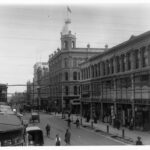

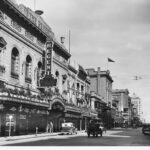
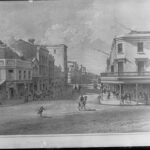
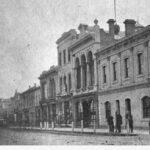
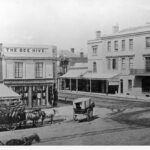
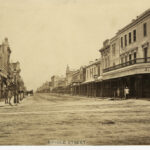
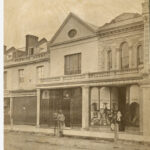
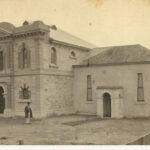
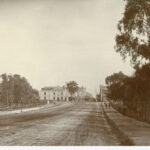
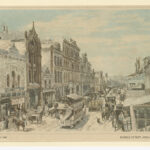
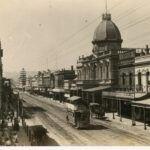
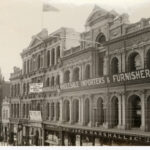
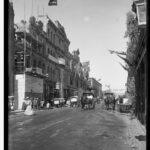
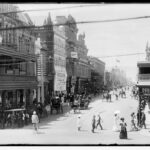

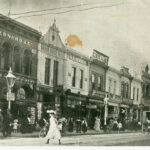
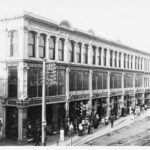
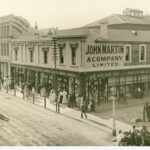
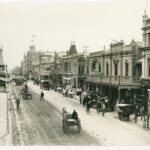
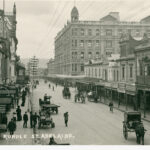
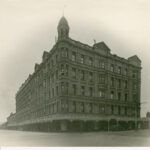
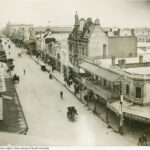
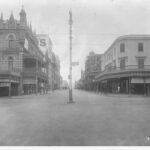
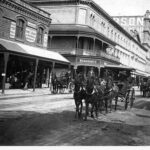
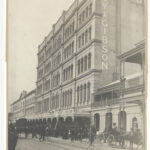

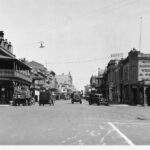
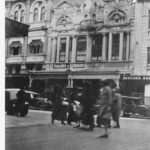
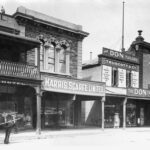
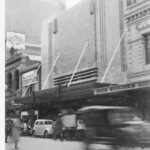
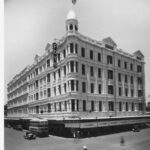
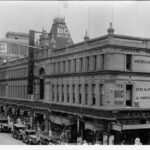
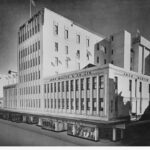
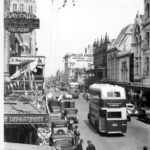
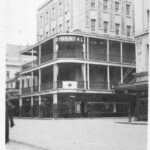
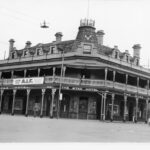
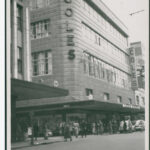
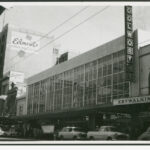
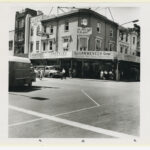
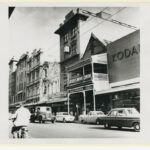

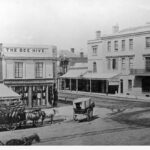
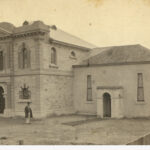
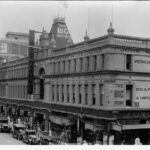
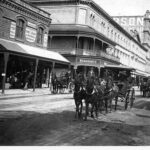
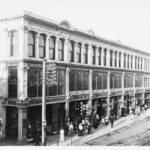
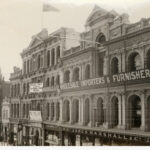
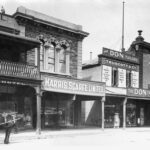

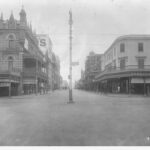
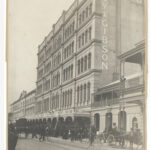
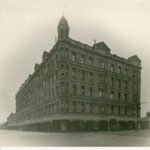
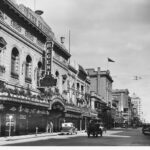

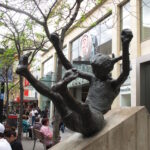
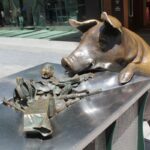
Comments
4 responses to “Rundle Street”
The article about John Rundle being a British MP and emigrating to Adelaide in 1840 is incorrect. That particular John Rundle had only one daughter (Elizabeth) and never came to Australia. Another John Rundle was on board the Java and came to Adelaide in 1840 with a wife and 6 children travelling (I believe) steerage.
Thanks for bringing that to our attention Lesley. We’ll look into where the author got that information and update.
Hi I’ve got a piano that was made in Adelaide in 1914 and it was located at 88 Rundle street Adelaide and I’m trying to find out the history of this piano .I found this at and old couples house in Brighton and has been sitting in a room since 1920 and know I have this 107 year old piano what is beautiful would anyone know of this piano thanks
Hi Roy,
That’s not an area I know a great deal about, but if you send us a picture of the markings on the piano I’ll see if anyone here can unearth more. I’ll e-mail you to follow up.